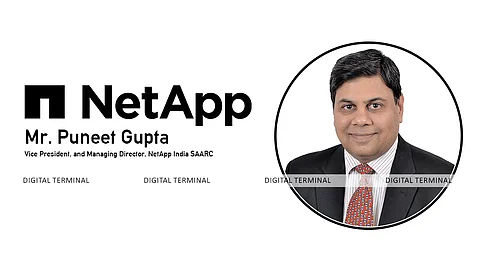

Authored by Puneet Gupta, Vice President, And Managing Director, NetApp India/SAARC
To keep up with India’s growing digital economy and ever-evolving customer demands in a dynamic macro-economic environment, most organisations are turning to cloud. Cloud is helping them deliver a more agile and flexible technology platform to fuel innovation and in turn, deliver better experiences to their customers.
A wholly agile, zero commitment model can work well for some workloads that experience peaks and troughs of demand. However, as cloud adoption matures within organisations, base loads become more predictable. This means that organisations must strike a balance between committed spend and agility with their cloud providers so as to maximise the return on their investments whilst keeping the agility they need. As technology platforms become more dynamic, this can be a daunting task. As such, more and more companies are implementing the practice of cloud financial operations (FinOps), that unite business strategy with enterprise-wide accountability to manage and optimise cloud spends.
FinOps is the relatively new practice of driving visibility and bringing financial accountability to the variable spending model of cloud. Essentially, finance and IT develop a series of best practice measures to quantify and provide insight into the associated cost of cloud usage. The objective is to create a cloud financial model that balances commitment with agility, delivering the needs of the business, whilst continually monitoring and optimising architectures to ensure performance and availability.
The first steps of cloud migration
Cloud migrations represent a major shift in how an organisation enables IT and digital initiatives. And this migration is on a strong trajectory in India, with the Indian public cloud service market expected to be worth USD 13 billion by 2026, according to an IDC report.
The goal of any cloud migration or adoption initiative is broadly to fuel digital transformation by moving focus away from running technology and towards innovation through technology. One good example is the deployment of cloud-native application platforms like serverless, microservices, which enables IT staff to focus on application development or more business outcome-focused activities rather than just “keep the lights on.”
These dynamic environments mean that automation must play a larger role. In general, organisations may seek to develop programs and utilise tools that allow them to continually improve security, automation, cost management, resource utilisation and compliance concurrently, with each optimisation creating multiple benefits whenever possible.
Pooling expertise to unlock the best of cloud
What’s the best way for enterprises to organise their strategies and teams to achieve these objectives? As enterprises continue to increase cloud investments, they should also consider how to grow their cloud expertise. Cloud maturity includes centralisation and coordinating decision-making across teams.
This is where the establishment of a Cloud Centre of Excellence (CCoE) comes in handy. The benefits include improved governance, better overall operational efficiency, and increased confidence in cloud security, increased accountability, better understanding of cloud bills, easier auditing processes, and more accurate levels of billing departments for their cloud use.
As more firms invest deeper in cloud and the number of cloud users increases, they must consider the business value gained from these resources.
FinOps: A crucial part of cloud transformation
While FinOps are a key component of a CCoE, many companies still lack visibility into the various aspects of the company’s public cloud operations, and thus are unable to monitor and optimise public cloud costs.
One way cloud decision makers can take a proactive approach to managing their cloud costs is by implementing a FinOps practice. More than simply managing and monitoring costs, FinOps takes a holistic view of the cloud’s business value along with an organisation’s objectives.
In any cloud deployment, FinOps teams have to balance the need for speed/performance, quality and cost. Just as you do not need to drive at race car speed to get to the grocery store, the highest level of performance may not be needed 24/7 for every scenario. FinOps will help organisations optimise and right-size their cloud usage, thereby bringing about greater efficiencies in cloud deployment and overall cost.
The awareness and interest to adopt FinOps has grown quickly in APAC and in India in the last 12 months. This comes as enterprises look at cost management measures on the back of high inflation and increased costs, according to this Forbes report.
So, how can we establish this practice quickly? Partnering with a Managed Service Providers (MSPs) is an effective way to implement FinOps, as many of them offer managed cloud and financial operations as their core services. Through their MSPs, companies can take a more holistic approach to increase control, optimise their IT resources and budgets more effectively, and deliver critical services such as network, application, infrastructure, and security. This in turn helps to drive the cloud’s business value over time.
For example, when a CCoE is combined with a dedicated MSP in cloud operations, enterprises can go even deeper into their cloud journey and often gain a more well-rounded approach to their cloud transformation projects.
In fact, enterprises that have adopted the MSP approach have stated that they enjoyed many benefits ̶ gaining expertise they don’t have internally, increased productivity of the IT teams, enhanced security and compliance, and reduced overall cloud costs.
Clearly, FinOps and its implementation via an MSP model is one that organisations must consider in the next phase of their cloud journey.